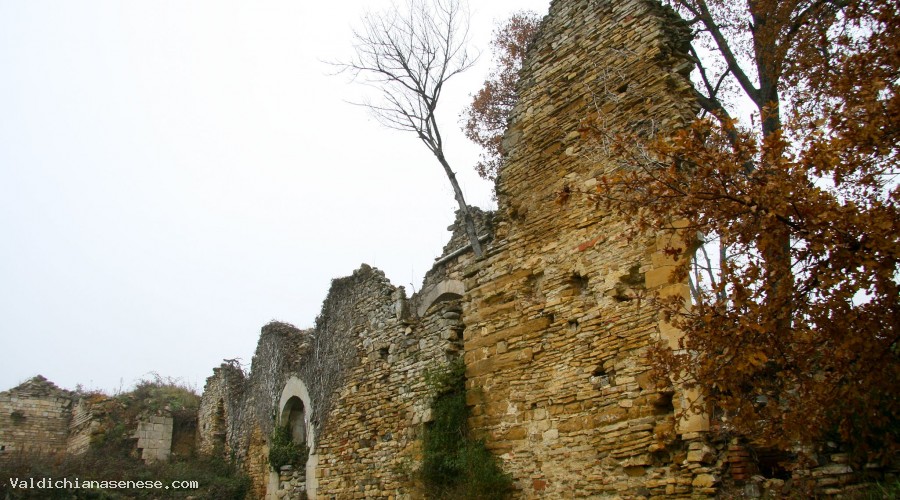Churches
Abbazia di Santa Maria Assunta a Montefollonico (Ruderi)
TORRITA DI SIENA
The foundation of this ancient monastery dates back to 1109, the date carved on what remains of the entrance to the church, together with the inscription "MCVIIII Intrantes Laudate Sanctam Mariam".
The first document that mentions the monastery, today reduced to ruins, is however from 1170 and a few years later appears in the list of disputed churches between the bishops of Siena and Arezzo.
Built as a Benedictine monastery, it became a Camaldolese in 1227, to pass to the Augustinians in 1306. Undocumented information traces the demolition of the church, which originally had a basilica with three naves, to the 18th century.
Of these original structures, in addition to the base of the bell tower, a perimeter wall remains, in which there are two portals and three arches supported by quadrilateral pillars with simple frames. The wall face is made of roughly squared stone drafts.
Click to read Montefollonico and the lost abbey, by Augusto Codogno
The foundation of this ancient monastery dates back to 1109, the date carved on what remains of the entrance to the church, together with the inscription "MCVIIII Intrantes Laudate Sanctam Mariam".
The first document that mentions the monastery, today reduced to ruins, is however from 1170 and a few years later appears in the list of disputed churches between the bishops of Siena and Arezzo.
Built as a Benedictine monastery, it became a Camaldolese in 1227, to pass to the Augustinians in 1306. Undocumented information traces the demolition of the church, which originally had a basilica with three naves, to the 18th century.
Of these original structures, in addition to the base of the bell tower, a perimeter wall remains, in which there are two portals and three arches supported by quadrilateral pillars with simple frames. The wall face is made of roughly squared stone drafts.
Click to read Montefollonico and the lost abbey, by Augusto Codogno